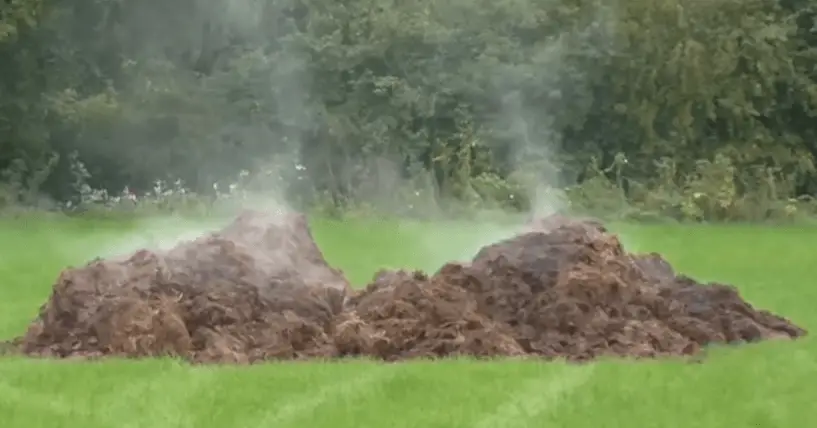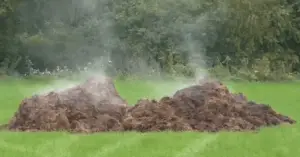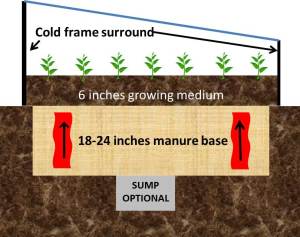Growing Early Vegetables in a HotBed Garden:

So the winter is upon us and the growing season is at an end? far from it if you know about the concept of Hot Bed gardening – a technique for growing vegetables from very early (or late) in the season.
This is not a new idea (is there anything new under the sun?), and indeed was used by the Romans when they invaded Britain only to discover the place was absolutely freezing cold, and they had a very limited time in which to grow their favourite veggies!
Yes, apart from being fantastic engineers and road-builders, and having the military capabilities of the borg (for all you trekkie fans) – they were also keen gardeners it seems 🙂
So what do you do when faced with a short growing season and the need for growing vegetables year-round? Simple, you increase the length of the growing season itself by whatever means possible. This can be done in a variety of ways from useing the principles of raised bed gardening, growing in hot houses or greenhouses, or indeed using hot bed gardening techniques.
So what is a hot bed garden?

To put it simply, hot bed gardening is the principle of heating the growing medium to a temperature that allows for the germination  and subsequent flourishing of whatever it is you are attempting to grow.
and subsequent flourishing of whatever it is you are attempting to grow.
This heat can be produced by artificial means like hot air, hot water or even electric cables. The more ‘natural’ or organic way to do this is by using the decomposition process of manure mixed with straw to create the temperatures needed – usually between 55-70 F
The Parisians of the late 19th – early 20th century were very efficient at this, and indeed were able to produce many tons of early vegetables when the rest of Europe was still in the grip of late winter and unable to ‘produce the goods’ quite literally. How did they accomplish this – by using an abundance of locally available and mostly free material at the time – Horse Manure!
Remember that at this time the motorised vehicle was virtually non-existant, and horses were the main means of travel and transport. An abundance of horses meant an abundance of muck, and the ideal solution for making money from muck – convert it into much needed vegetables!
With this aim in mind they set about building acres of raised beds specifically to be used for hot bed gardens. This enabled them to ‘steal a march’ on their European counterparts who had yet to cotton on to the idea, and subsequently had to pay the price as the French winterized their Raised Beds to ghet an early start in the Spring.
Building A Hot Bed Garden:
It is not difficult to follow in their footsteps, in fact it did not take many years for the British and the rest of Europe to join in and produce their own ‘Hot’ gardens and so begin to grow their vegetables out of season along with the French.
So to begin….
Firstly you need to dig a pit, or build a wooden frame at least 24 inches deep. In the case of a pit, you fill this to a depth of 18 inches with horse manure (muck mixed with straw) preferably but sheep, chicken or cattle will do also.
Make sure that the manure is between 7-28 days old. Much older and it will have lost a lot of the heat potential. earlier and it will be to hot and risk killing the plants or seeds.
After you have filled in the pit then press down the manure so that it is quite firm. This will slow down the decomposition and make the heat last longer. If the manure is on the dry side then give it a good soaking before topping it off with 6 inches of goos quality topsoil, or better still a mix of compost and peat – similar to what you may use in a good Raised Bed garden.
When this is done then cover over with a simple cold frame or even a polythene cloche to retain the heat around your veggies. The growing medium should begin to warm up almost immediately and within a few days you can begin to plant your seeds, or young plants that you have already grown-on in your heated greenhouse.
Extending The Growing Season
Growing early or late in the season is dependant on one other thing however, apart from the temperature, and that is the daylight hours available. So bear in mind the length of the growing times needed for each plant, as well as the temperature they need to thrive.
A tactic used by the early parisians was to plant salads in January and sow carrot seeds amongst them. This meant that the salads were ready to crop as the carrots reached near maturity.
When the carrots were ready they then planted radish for a quick crop and brassicas such as cauliflower or broccoli for harvesting later in the season when the heat in the bed had died out to be replaced with a highly nitrogen-rich source of nutrients.
As for the hot bed itself. The heat should last for anything between 2-3 months depending on the depth of the manure base. The deeper the base then the longer the heat will last in general.
This heat that is produced from your hotbed can also be used in turn to heat the inside of a greenhouse or polytunnel. One idea used frequently is to build a hot bed along one side of the polytunnel and use the heat to keep the polytunnel frost-free, to enable an earlier planting of tomatoes and other crops.
and other crops.
Other vegetable gardening ideas for small areas, including Straw Bale gardening or Raised Beds
or Raised Beds can also be utilized early in the growing season to produce early out-of-season vegetables.
can also be utilized early in the growing season to produce early out-of-season vegetables.
So no need to be idle and wait for April to arrive – you can get started early with your own hot bed garden 🙂


